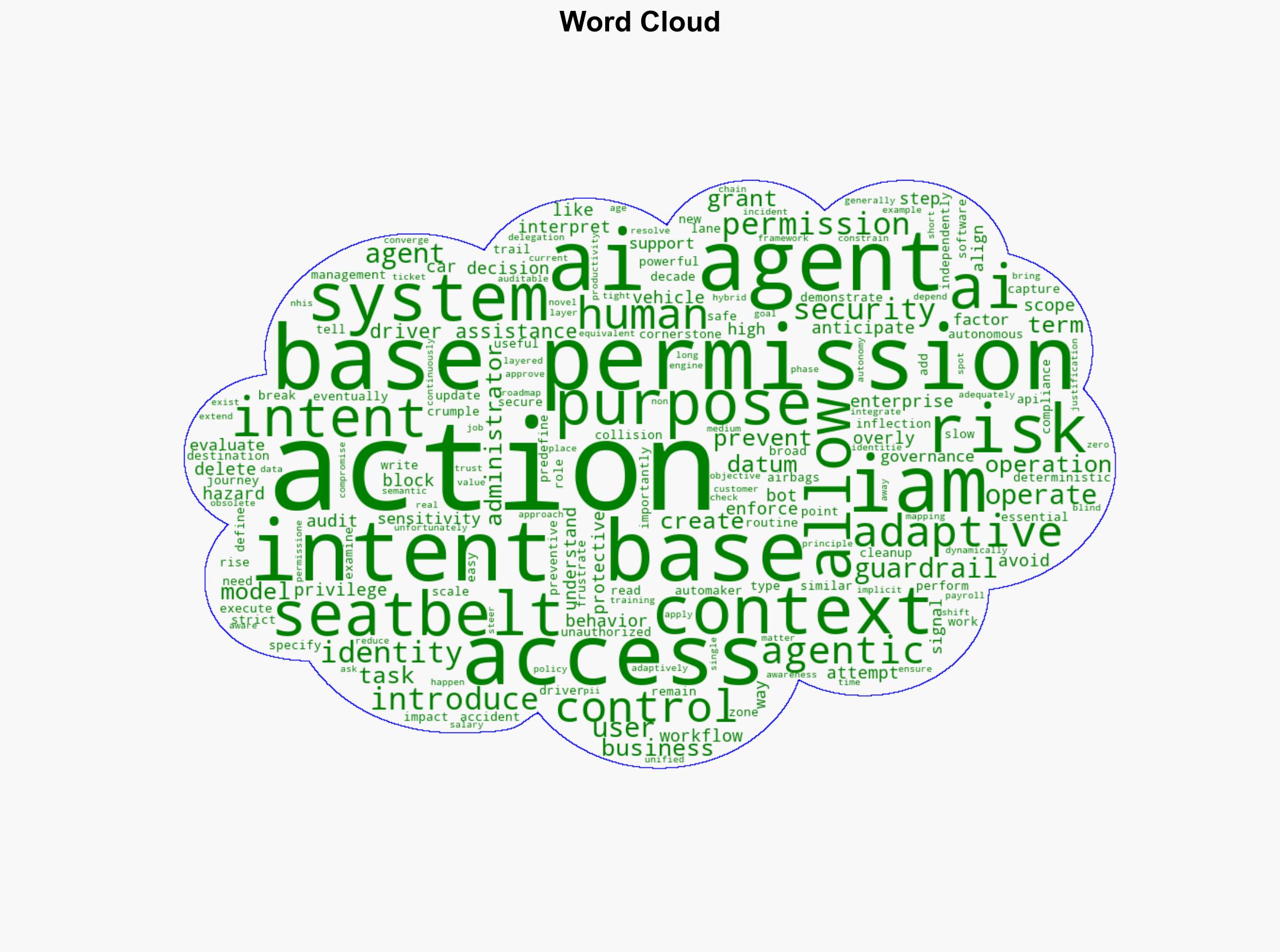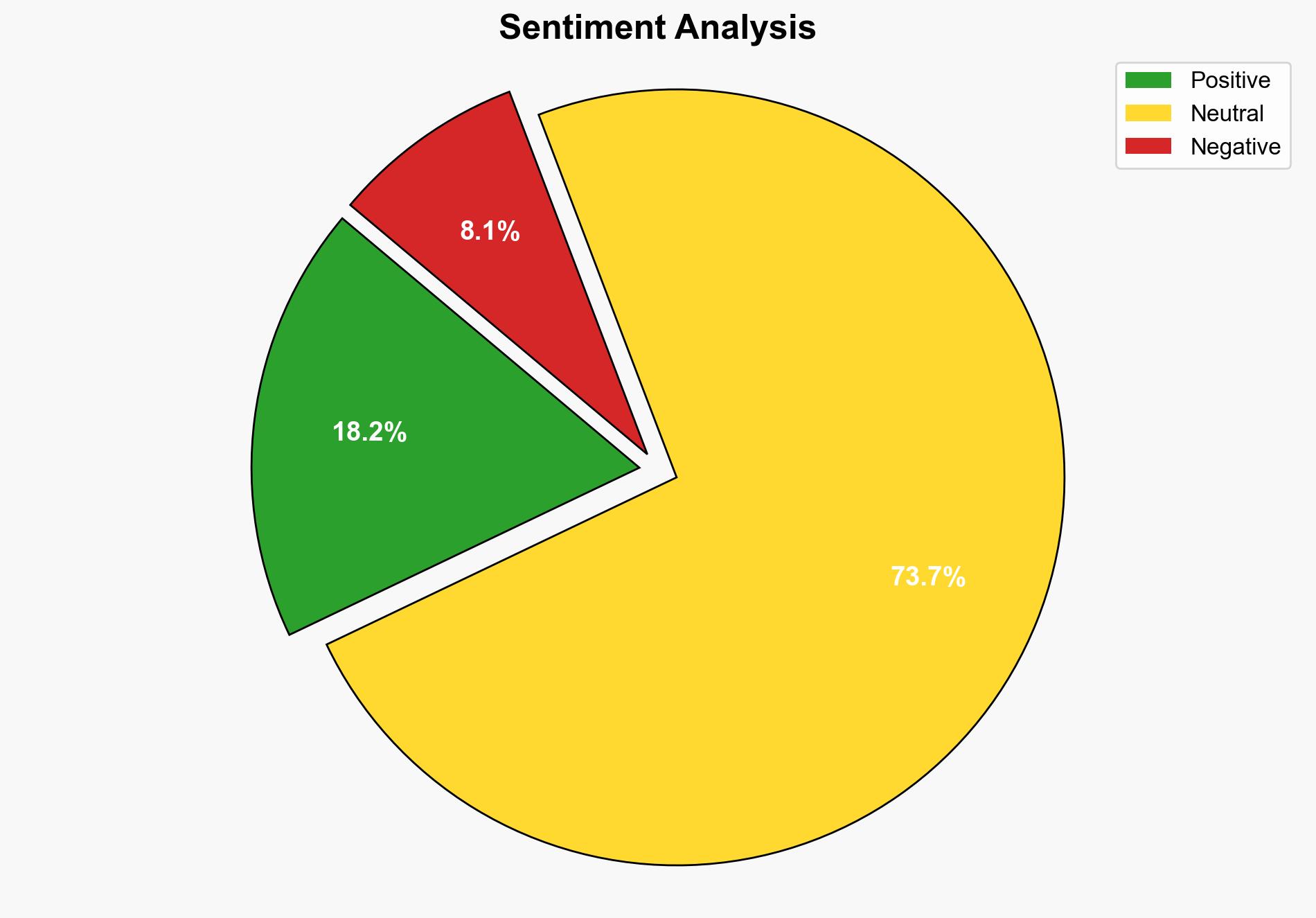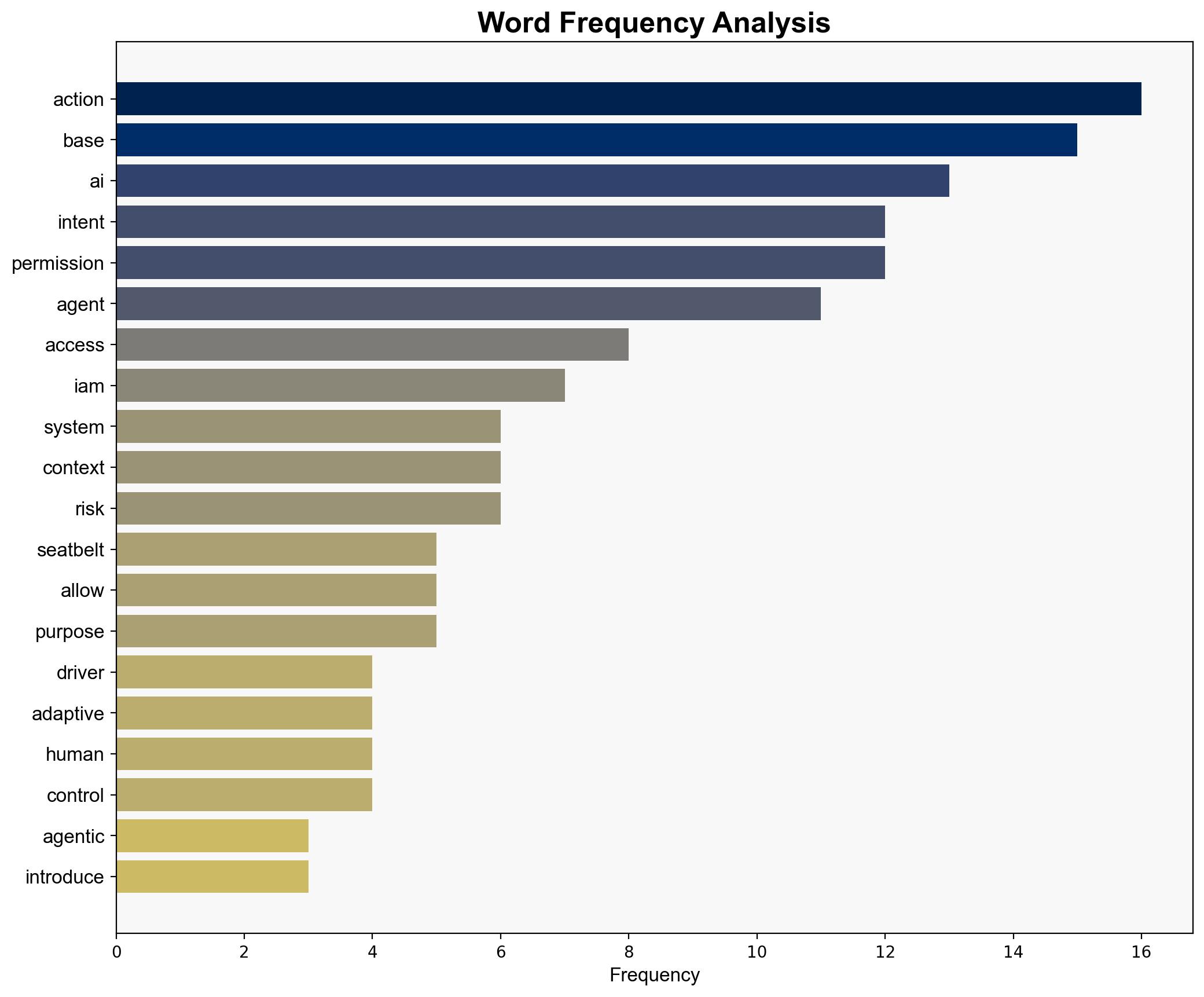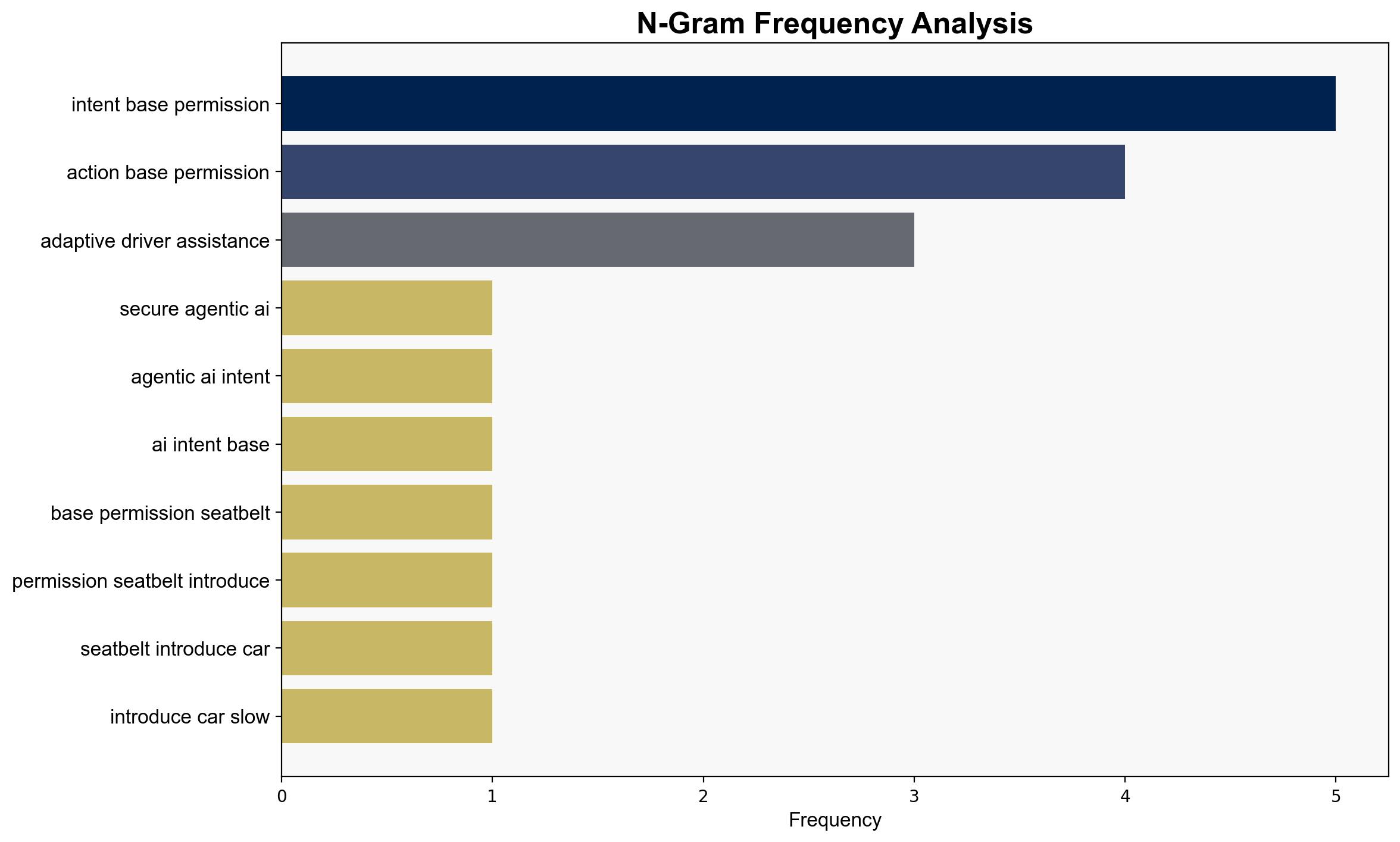Securing agentic AI with intent-based permissions – Help Net Security
Published on: 2025-10-10
Intelligence Report: Securing Agentic AI with Intent-Based Permissions – Help Net Security
1. BLUF (Bottom Line Up Front)
The most supported hypothesis is that intent-based permissions will become a critical component in securing agentic AI systems, effectively balancing security and operational efficiency. This approach aligns with the evolving landscape of AI autonomy and enterprise security needs. Confidence level: High. Recommended action: Enterprises should begin integrating intent-based permissions into their IAM systems, focusing on adaptive policies that align AI actions with business objectives.
2. Competing Hypotheses
1. **Hypothesis A**: Intent-based permissions will successfully secure agentic AI systems by providing a dynamic and context-aware framework that aligns AI actions with business objectives, reducing security risks and enhancing compliance.
2. **Hypothesis B**: The complexity and novelty of intent-based permissions will lead to implementation challenges, potentially creating security gaps and operational inefficiencies as organizations struggle to adapt their IAM systems to this new paradigm.
Using ACH 2.0, Hypothesis A is better supported due to the structured approach of integrating context-aware policies and the historical success of adaptive security measures in other domains.
3. Key Assumptions and Red Flags
– **Assumptions**:
– Organizations have the capability to implement and manage complex intent-based permission systems.
– AI systems can effectively interpret and act on intent-based permissions without introducing significant errors.
– **Red Flags**:
– Lack of clear guidelines or standards for implementing intent-based permissions.
– Potential resistance from enterprises due to perceived complexity and cost.
4. Implications and Strategic Risks
– **Implications**: Successful implementation of intent-based permissions could lead to enhanced AI governance, reducing unauthorized actions and aligning AI operations with strategic goals.
– **Strategic Risks**: Failure to implement effectively could result in security vulnerabilities, operational disruptions, and potential regulatory challenges. The transition phase may expose enterprises to increased risk if not managed carefully.
5. Recommendations and Outlook
- Short-term: Conduct audits of current AI systems to identify potential gaps and establish a baseline for implementing intent-based permissions.
- Medium-term: Develop and integrate context-aware policy engines that can dynamically assess AI actions against business objectives.
- Long-term: Transition to a unified identity framework that supports both action-based and intent-based permissions, ensuring a robust security posture.
- Scenario Projections:
- Best: Seamless integration of intent-based permissions enhances security and operational efficiency.
- Worst: Implementation challenges lead to security breaches and operational setbacks.
- Most Likely: Gradual adoption with initial challenges, followed by improved security and compliance as systems mature.
6. Key Individuals and Entities
No specific individuals are mentioned in the source text. The focus is on enterprises and AI system developers.
7. Thematic Tags
national security threats, cybersecurity, AI governance, enterprise security




